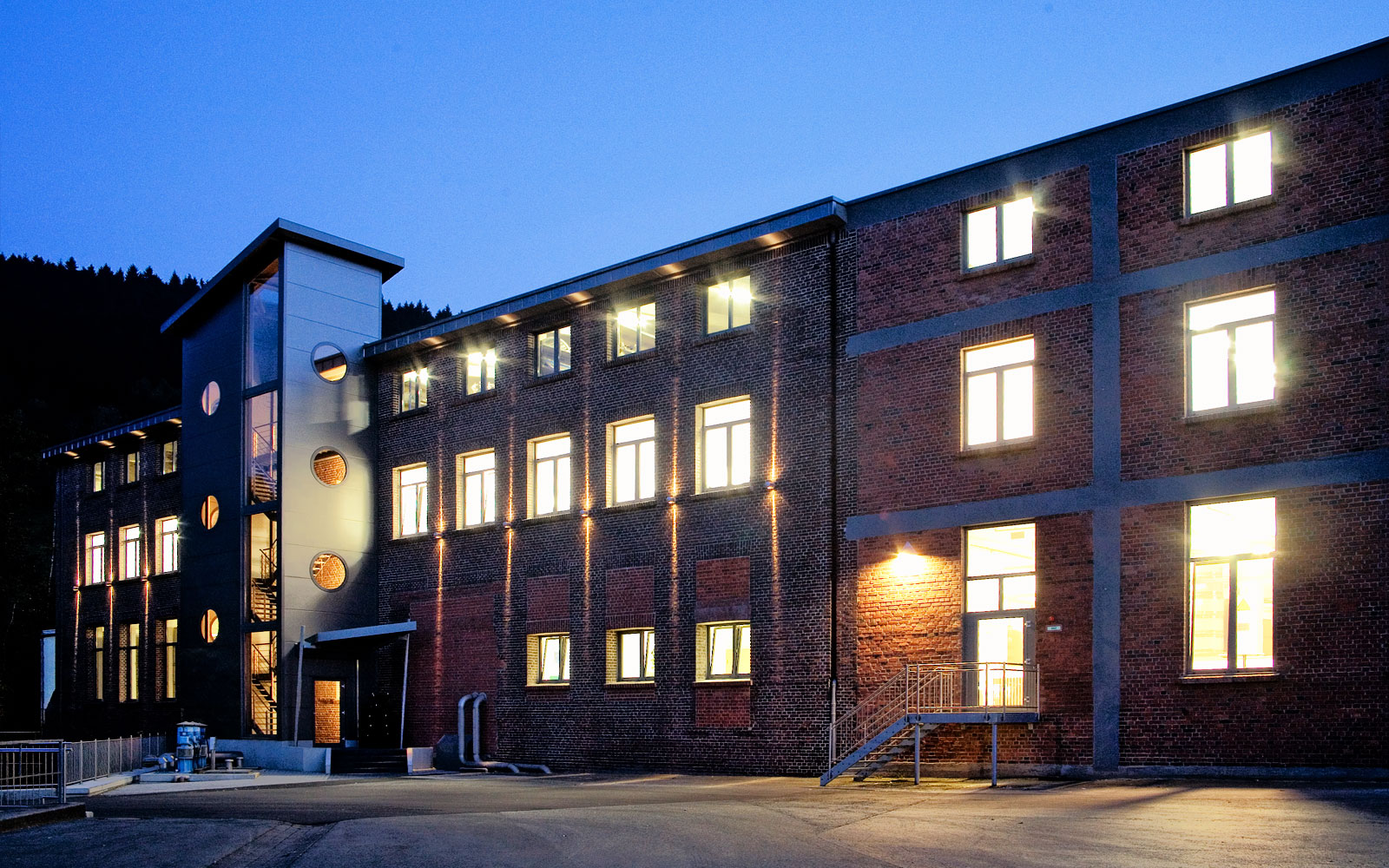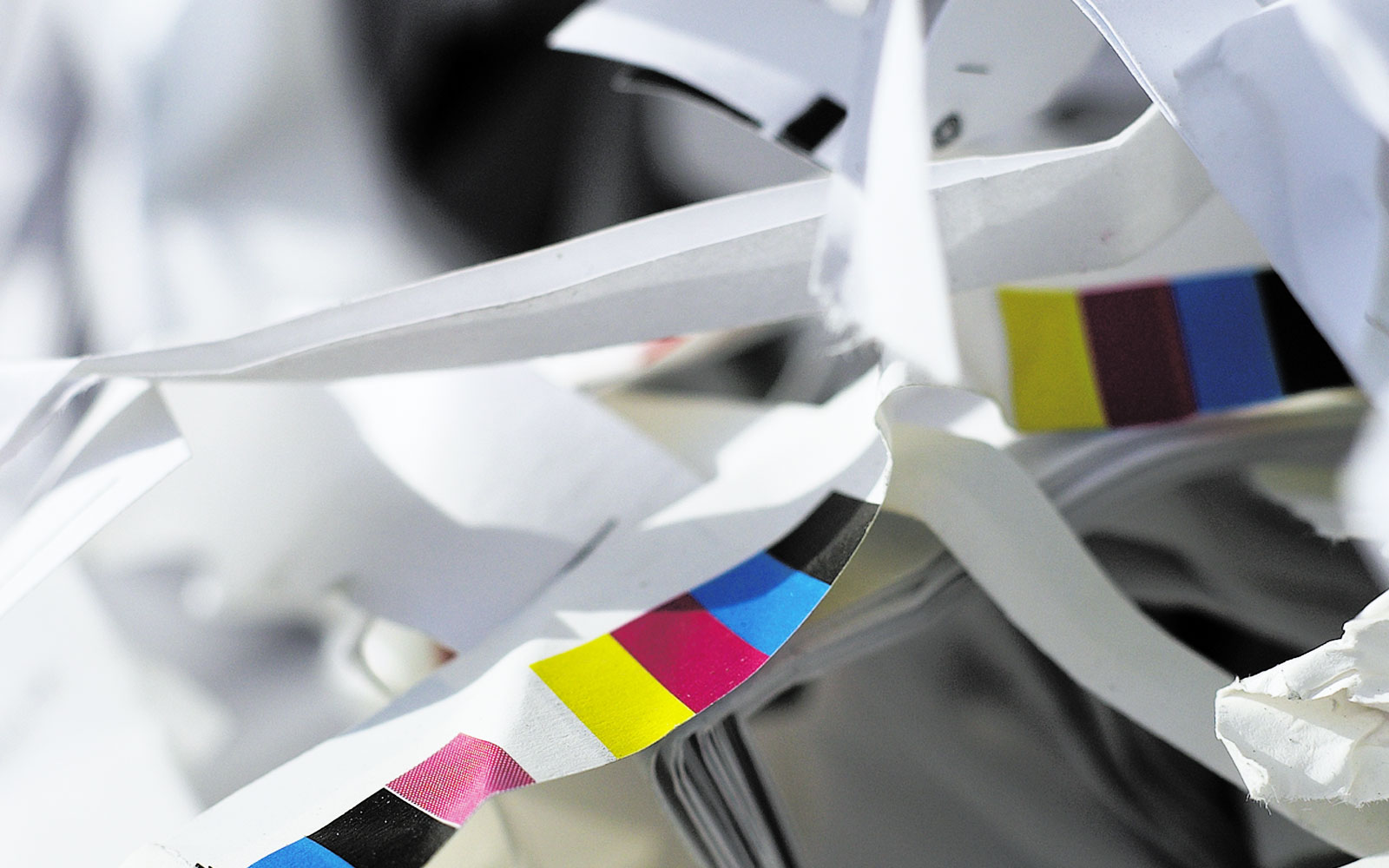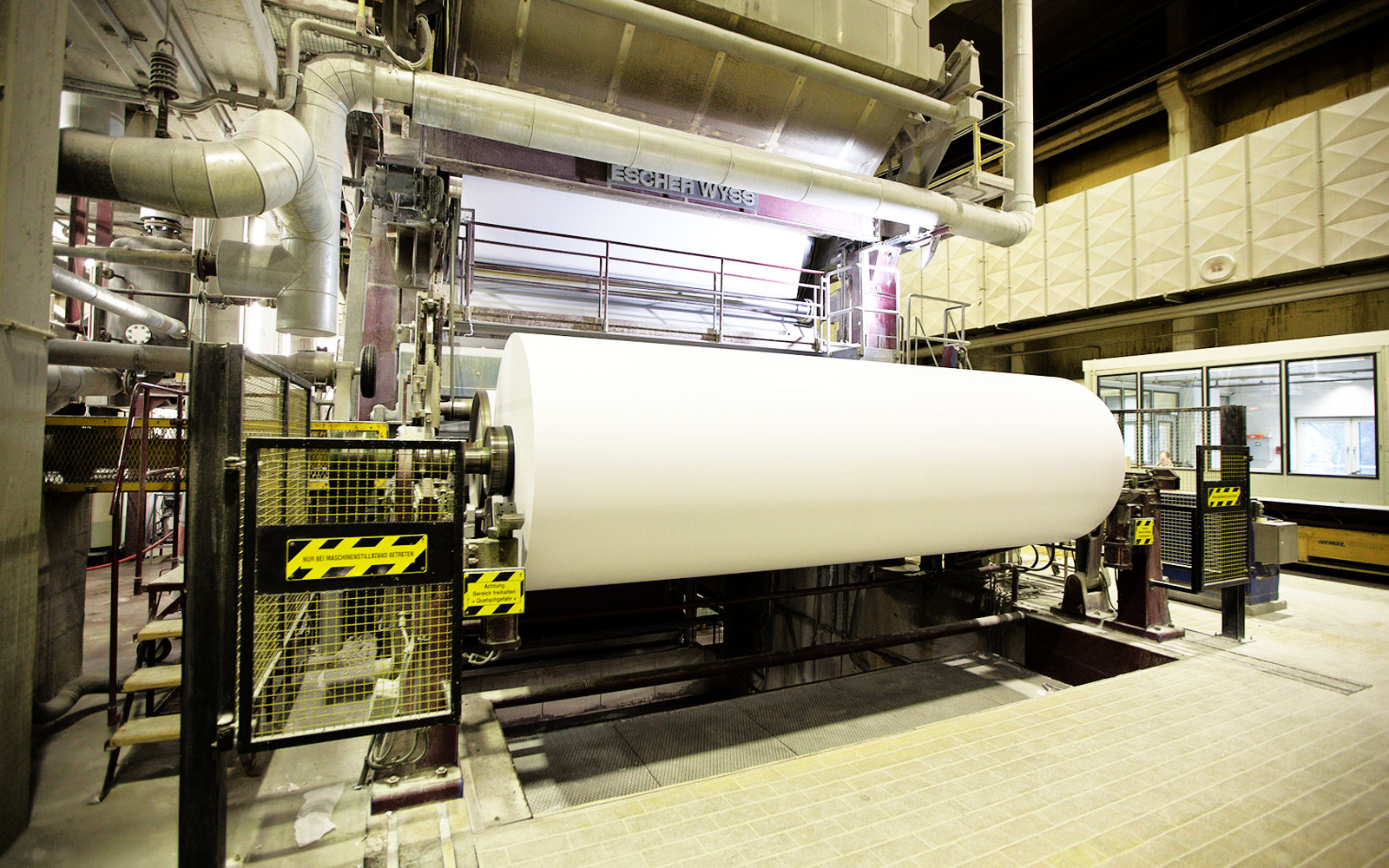The fibre-water mixture generated in the raw material preparation is then diluted down to a fibre content of just approx. 0.5 %. At this stage it is passed to the paper machine with a speed of around 600 litres per second.
Since the most recent modernization of the paper machine, which was first put into operation in 1970, can run at a speed of up to 800 m/min (48 km/h).
The fibrous material is first dewatered in the paper machine through a wire. In the next step the paper web, that has been created there, is pressed by two rotating felts so that the water from the paper web is absorbed by the felts. This is followed by the drying and smoothing of the paper in the dryer section in which the paper web is led via a steam-heated Yankee cylinder. The yankee cylinder has a diameter of 5 metres. On the reverse side a temperature of 320 °C is passed through.
After a dwell time of 3 to 5 seconds on the 27 metres long paper machine 600 litres of fibre-water mixture have been turned into around 1.5 kgs of paper.




